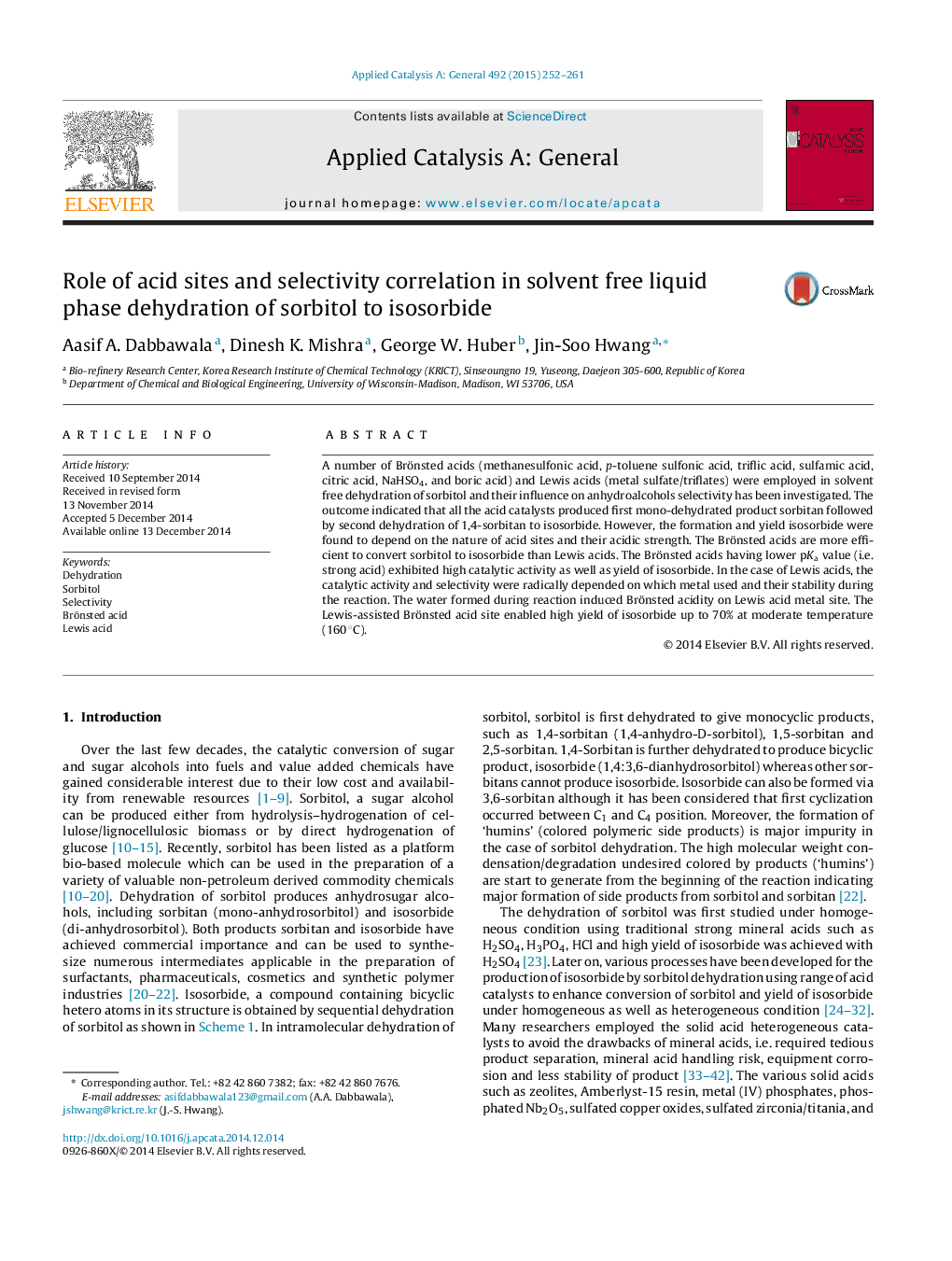| Article ID | Journal | Published Year | Pages | File Type |
|---|---|---|---|---|
| 39236 | Applied Catalysis A: General | 2015 | 10 Pages |
•Influence of acid sites investigated in dehydration of sorbitol to isosorbide.•Brönsted acids are efficient to convert sorbitol to isosorbide than Lewis acids.•Strong Brönsted acids exhibit high TOF as well as yield of isosorbide.•The water formed during reaction induced Brönsted acidity on Lewis acid catalysts.•The Lewis-assisted Brönsted acid site enables high yield of isosorbide at 160 °C.
A number of Brönsted acids (methanesulfonic acid, p-toluene sulfonic acid, triflic acid, sulfamic acid, citric acid, NaHSO4, and boric acid) and Lewis acids (metal sulfate/triflates) were employed in solvent free dehydration of sorbitol and their influence on anhydroalcohols selectivity has been investigated. The outcome indicated that all the acid catalysts produced first mono-dehydrated product sorbitan followed by second dehydration of 1,4-sorbitan to isosorbide. However, the formation and yield isosorbide were found to depend on the nature of acid sites and their acidic strength. The Brönsted acids are more efficient to convert sorbitol to isosorbide than Lewis acids. The Brönsted acids having lower pKa value (i.e. strong acid) exhibited high catalytic activity as well as yield of isosorbide. In the case of Lewis acids, the catalytic activity and selectivity were radically depended on which metal used and their stability during the reaction. The water formed during reaction induced Brönsted acidity on Lewis acid metal site. The Lewis-assisted Brönsted acid site enabled high yield of isosorbide up to 70% at moderate temperature (160 °C).
Graphical abstractFigure optionsDownload full-size imageDownload high-quality image (123 K)Download as PowerPoint slide
